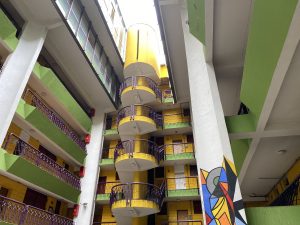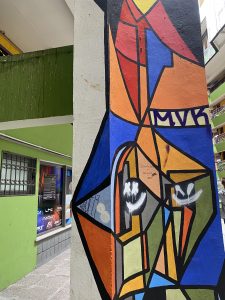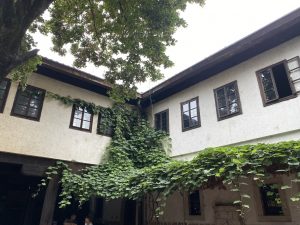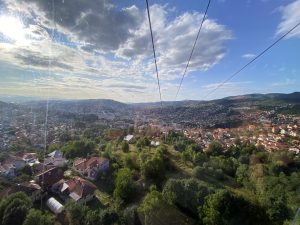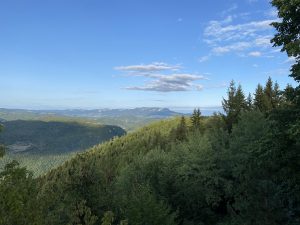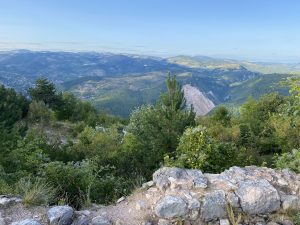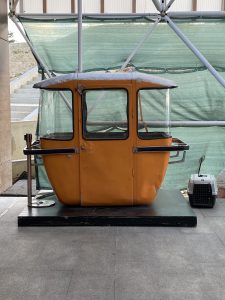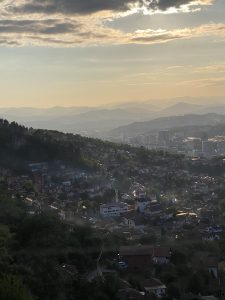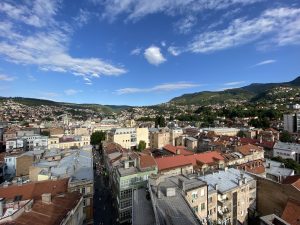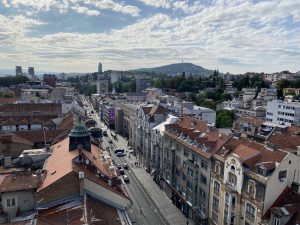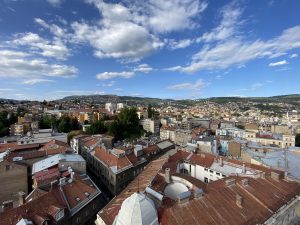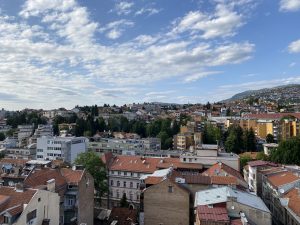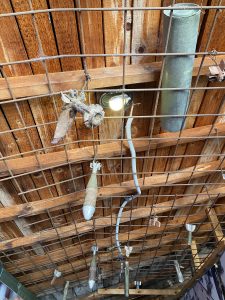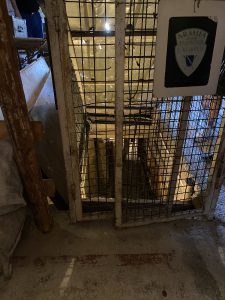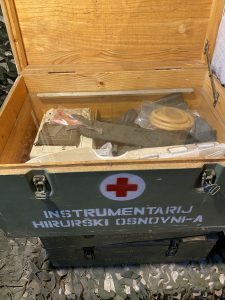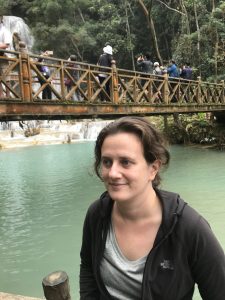Sarajevo Sites
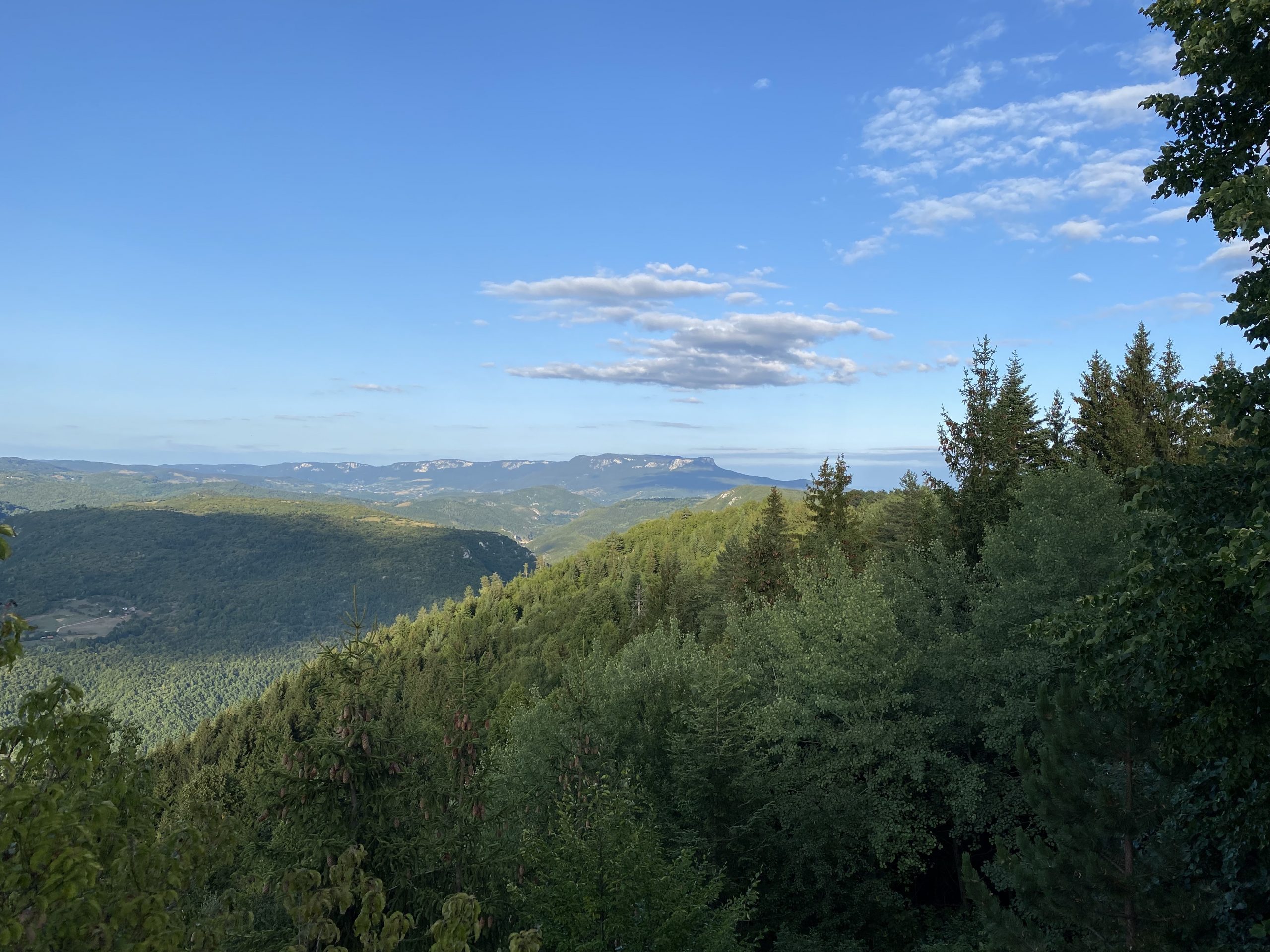
After a jam-packed day seeing Herzegovina, I decided to spend the next day and a half exploring the sites of Sarajevo.
I joined the 90-minute East Meets West free walking tour. Our mid-30s female guide was very knowledgeable and personable and guided the group of 20+ strangers with ease through the city.
She explained the events that led to the start of WWI — the assassination of Franz Ferdinand, the Austro-Hungarian prince, by Gavrilo Princip near the Latin Bridge. It is rumoured that before Princip’s death (caused by TB a few years after the start of the War) Princip lamented that if he had known his actions would cause the deaths of so many that he would’ve used the bullet on himself instead. To this day, there are greatly contrasting opinions of Princip — some view him as a terrorist while others view him as a hero.
We saw the starkly contrasting architecture from the Austro-Hungarian period and the communist era under Josip Broz Tito (below left).
The guide showed us what is known as the “ugliest building” in Sarajevo and explained its creation. Under Tito, a lot of the newer buildings that lined the Sarajevo skyline were beige, boring, and blocky. The 1984 Winter Olympics were being held in the city and there was a desire to spruce things up. An architect brightened up this building with neon colours (above middle and right). There is a rumour that the apartments that face this building receive a discount on their rent for having to look at the atrocity.
We saw the longest-running hostel in Sarajevo. There used to be dozens of hostels that hosted travellers from Istanbul. It would take about 3 weeks to make the journey on horseback. This owner of this hostel would offer the first 3 nights for free knowing that guests would typically stay for at least 4 weeks due to the length of the journey. What used to be horse stalls is now home to shops and a cafe.
We visited a handful of other sites on the tour including the Sarajevo Brewery which has been in operation since 1864, City Hall, the only active synagogue in the city, and more.
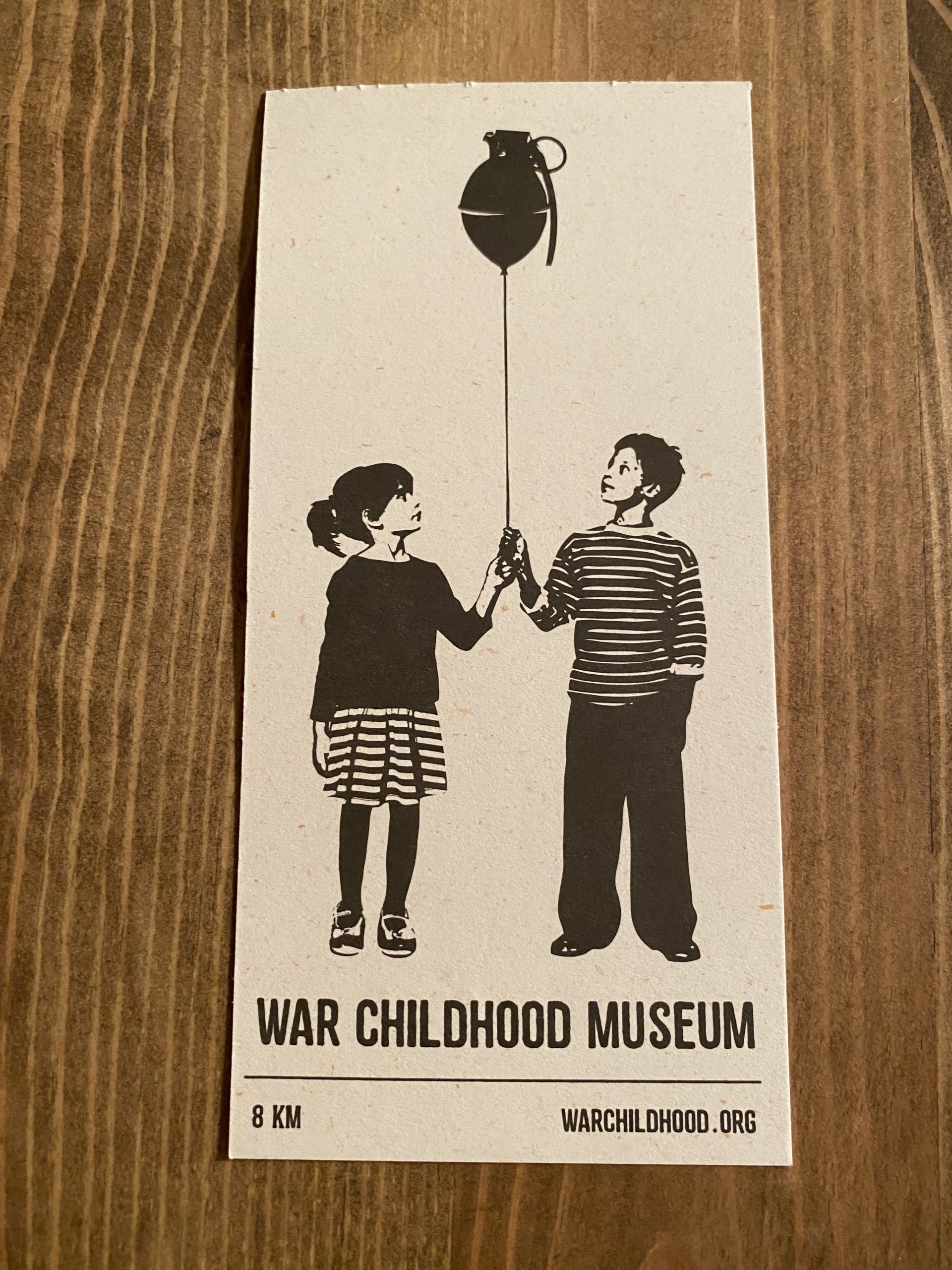 I then went off to the War Childhood Museum which was incredibly moving and impactful. The exhibit features prized possessions of children from the Bosnian War. While the museum focuses on children from Yugoslavia, there are now also some items from children in Afghanistan, Lebanon, and others. There is also a very well-done video featuring interviews of adults who experienced war as children.
I then went off to the War Childhood Museum which was incredibly moving and impactful. The exhibit features prized possessions of children from the Bosnian War. While the museum focuses on children from Yugoslavia, there are now also some items from children in Afghanistan, Lebanon, and others. There is also a very well-done video featuring interviews of adults who experienced war as children.
The remainder of the day was spent in search of amazing views of the city. I succeeded and then some!
The obvious place to see stunning views is at the top of the cable car. You can hike up or down (or both) but I was a bit short on time and didn’t want to be walking back in the dark so opted to take the cable car both ways. There are also some trails at the top, a cafe, and the old Olympic bobsledding tracks, which I was going to see on another tour.
The other spot I found some great views was at a semi-hidden cafe right at the entrance to the Old Town area. There’s a cafe at the top of Hotel Hecco Deluxe. To access it, take the hotel elevator (not the resident elevator) up to the 9th floor. You’ll find yourself in front of the registration desk for the hotel – turn left and up a flight of stairs. Tada! You are at the top of the building with a wrap-around deck boasting incredible views.
My last experience was a half-day tour with Funky Tours — the Siege Tour. Our group of 7 visited some of the most popular sites including the War Tunnel Museum, the Olympic Bobsled Track, the Jewish Cemetery, and the Yellow Fortress. I found the most interesting and impactful stop to be the War Tunnel Museum.
We learned about the precarious placement of Sarajevo during the Bosnian War and how the citizens were trapped due to the hills surrounding the city which were occupied by Bosnian Serbs. The only portion of the city that wasn’t blocked by the hills was the airport which was under the control of the UN. In order to get supplies in, the people of Sarajevo decided to construct a tunnel underneath the airport. The Serbian army would not attack the tunnel from above as it would be considered an attack on the UN and the Serbian army didn’t know where the entrances were to the tunnel. It, therefore, allowed for the transport of a lot of needed illicit goods.
We were also told about the heartbreaking Sarajevo Roses found throughout the city. These are places that were hit with grenades and resulted in the death of three or more people. After the war, the city decided to paint these marks red to symbolize the blood that was spilt there. It also looks like a rose, those the name, Sarajevo Rose. Below you can see both where the grenade hit and where the shrapnel exploded.
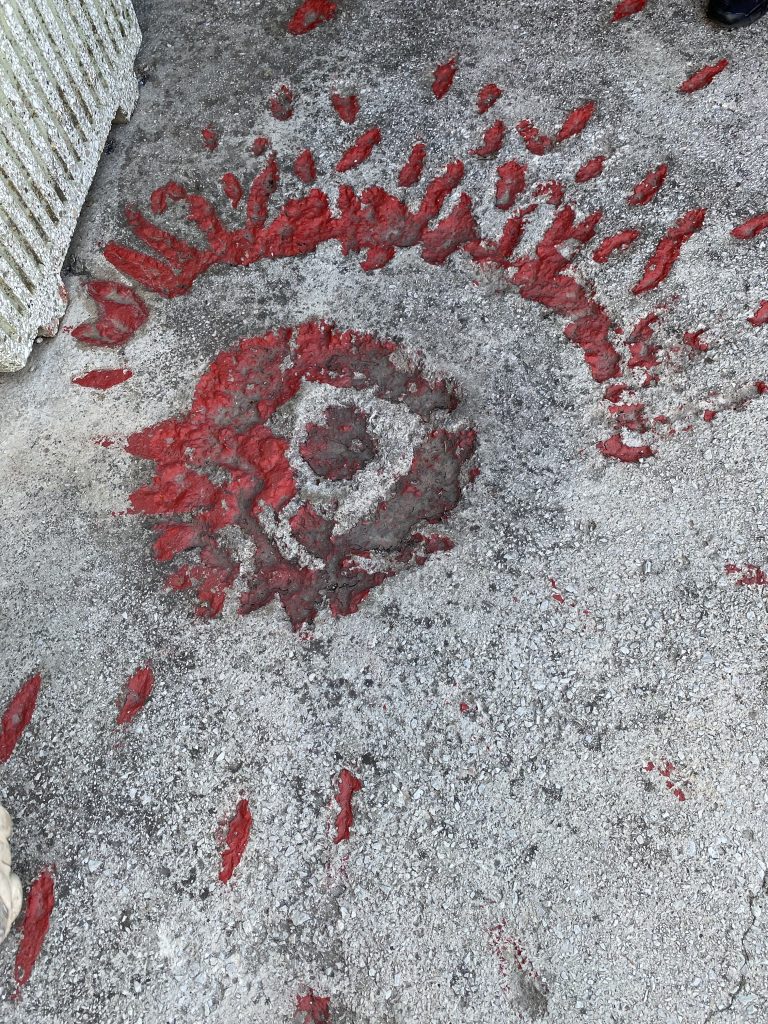
While walking through the city, the impact of the war that concluded less than 30 years ago is still present. We drove by Sniper Alley and the buildings were still littered with holes from bullets and shrapnel. Everyone I spoke with in Sarajevo still felt the reverberations of the war even if they were too young to be alive during it. There is a keen awareness of their country’s history and also a lot of pride and love of the Bosnian and Herzegovinian people.


